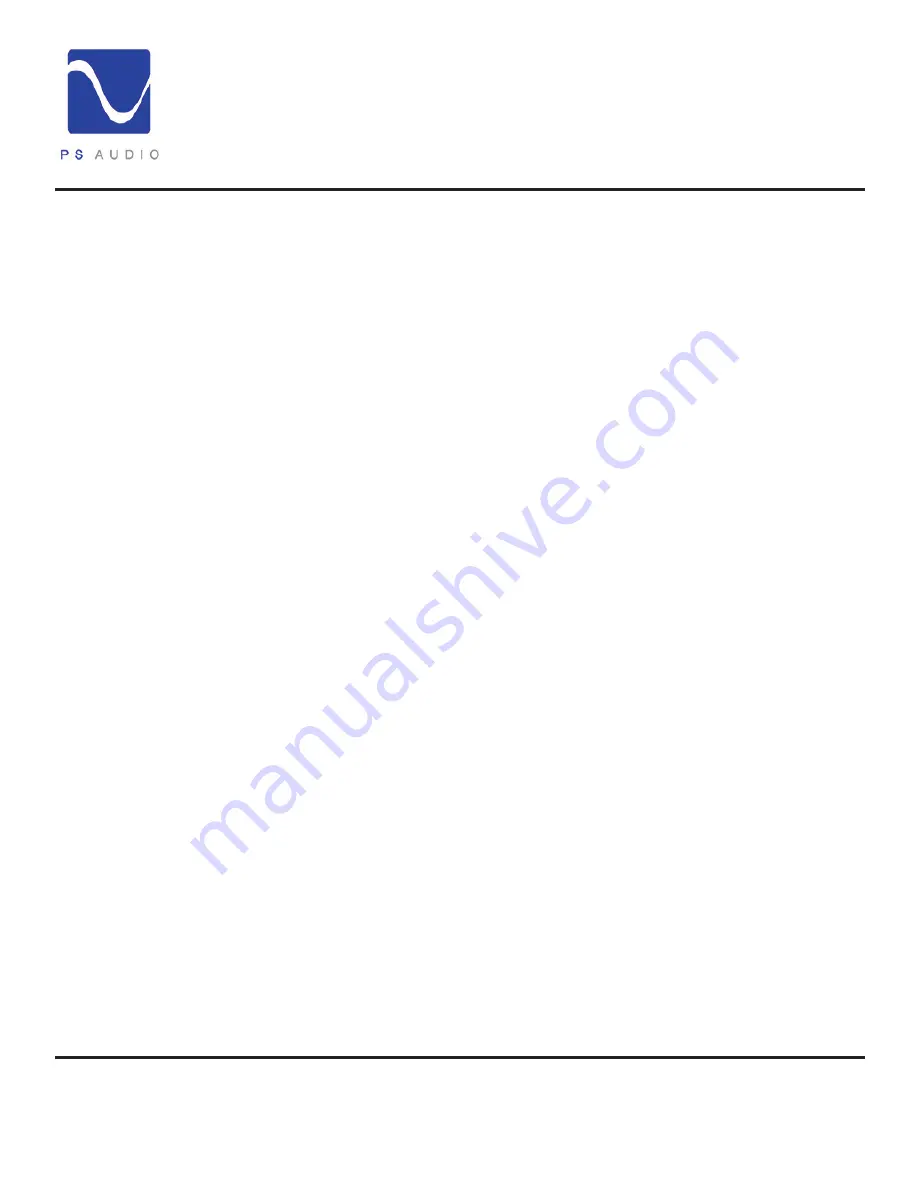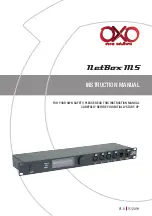
4826 Sterling Drive, Boulder, CO 80301
PH: 720.406.8946 [email protected] www.psaudio.com
Questions and Answers 16
Questions And Answers
©2013 PS Audio International Inc. All rights reserved.
®
Owner’s Reference
NuWave Phono Converter
format. The NPC will then add a PCM acceptable wrapper around the packet of pure DSD data to
“fool” the DAC or computer attached to the NPC into believing the data is acceptable PCM. The
wrapper is nothing more than a small bit of code known as a header which contains information about
the packeted material length, etc.
This is the same sort of method used in another format called TCP/IP, the basis of the internet (invented
in 1974 by Vint Cerf and Bob Kahn). Using this packet based system, any type of information can be
cut up and sent over any network without molestation or change if it has the correct packet size and
wrapper information. In this same way, one can send images, music and data in any form over the
home network or the web to anywhere in the world.
Once received, the accepting device will have to be able to remove the wrapper, figure out what the
data format is and what to do with it. This is why any PCM based audio program can record DSD if it
is sent using the DoP protocols, but only very specific devices capable of playing DSD files can actually
playback DSD or DoP.
Both PCM and DSD (over DoP) are available to connect to your DAC, recorder, mixing panel or
computer through any of the three available digital outputs. The choice of PCM or DSD is available
through the front panel display. You can only output one digital audio format at a time.
The filters used in the Burr Brown PCM4222 A/D Converter, which is the heart of the NPC digital
stream, are linear phase filters in the PCM mode. DSD filters are not related to PCM filtering and
decimation. In the PCM mode, downsampling to 44.1kHz through 96kHz/24 bits uses low group
delay linear phase filtering and is the best sounding option for PCM on most systems. The two higher
downsampled sampled rates, 176.2kHz and 192kHz use the PCM4222’s linear phase “conventional
decimation filter” which has a slightly higher group delay at the upper frequency extremes.
It is recommended that if you are playing to a DAC or recording to a simple recorder such as Audacity,
that you use 96kHz/24 bits as standard. Use of higher sample rates should include the careful
addition of digital EQ on the top end to compensate for the slight group delay of the conventional linear
phase filter. We recommend use of the two higher PCM sample rates only for recording studios and
knowledgeable recording and mastering engineers. Use of the two higher sample rates may result in
a slightly thinner sound to the midbass areas and a somewhat brighter top end, which can certainly
be compensated for through experienced implementation of digital EQ.
There should be no concern over restricted dynamics, low level detail or presence when listening to
or recording LP’s or tape at the recommended 96kHz/24 bit settings. Because the NPC is always
sampling at an extremely high frequency, the -3dB point for any incoming AC signal is 80kHz and the
dynamic range and signal to noise ratio is better than 120dB (which far exceeds the 87dB best case
S/N Ratio of the NPC phono stage and LP’s of any type). LP’s and tape never approach anywhere
near these figures and using 96kHz/24 bit resolution gives the user 120dB of dynamic range (107dB
in practice) and frequency response extending out to 48kHz without any phase shift.
Certainly feel free to experiment to your heart’s content but our recommendation is to stay at 96kHz/24
bits for all the reasons just detailed.
How does DoP
work?
What type of
PCM filters are in
use?
Why do you
recommend only
96kHz/24 bit?
Should I be
concerned about
loss of resolution
or detail?
What can play
the DSD?








































